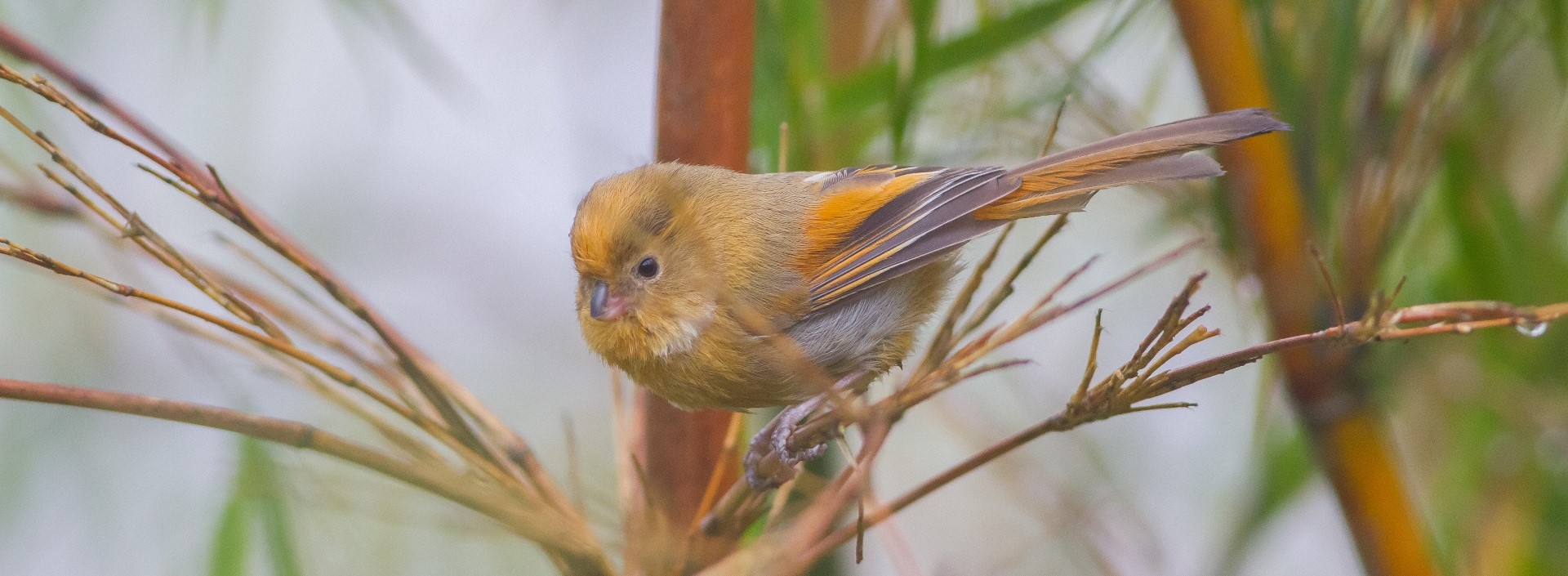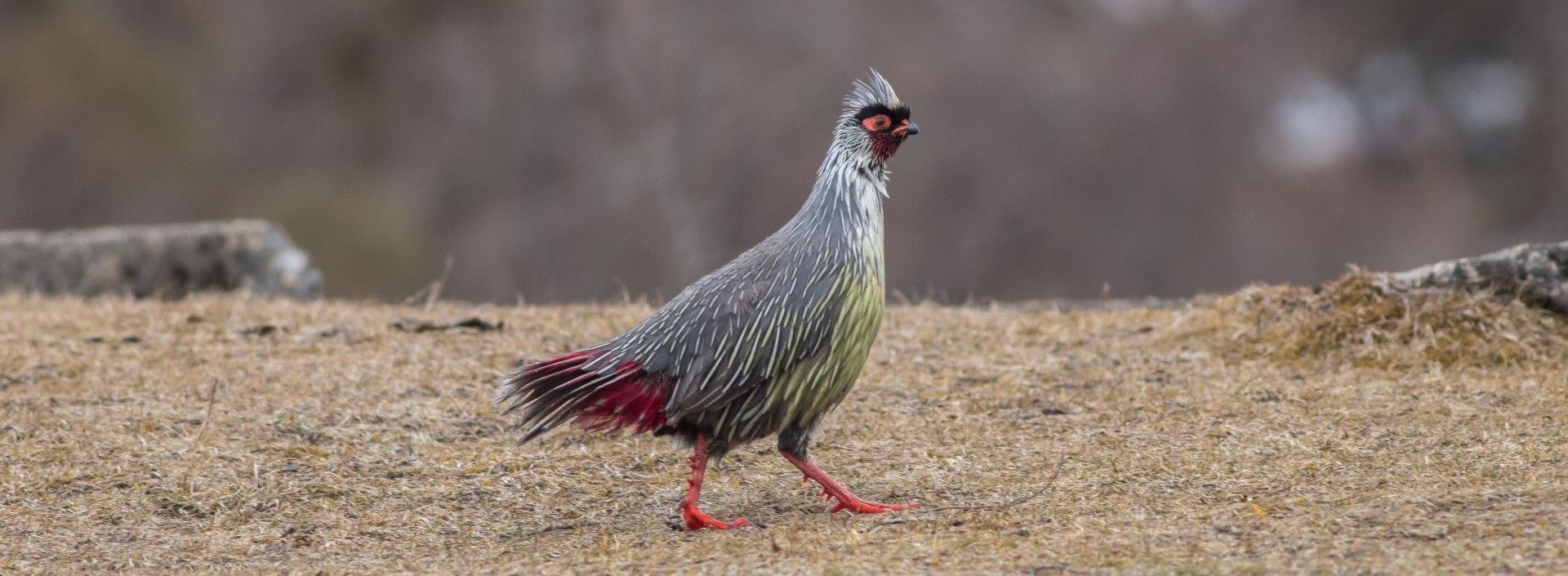| Day-1 |
The guests would be received by our guides and drivers team from Bagdogra or Darjeeling, depending upon the arrival plan of the group. From Bagdogra, it is nearly 150 kilometers or 6 hours of drive. So it is expected that if we consider a few breaks on the way for birding, we would arrive at Yuksom late by sundown. Overnight we would stay at a homestay at Yuksom and accept their flamboyant ecotourism hospitality. |
| Day-2 |
would warm up ourselves for the next few days by mountain hiking and birding. To save birding hours, we start in darkness or half-light at 4:30 AM. Our ascent to Sachen (7,200 ft) from Yuksom (5,800 ft); is an 8 kilometers or 3 hours trek. So if we make it on time, we would reach Sachen by breakfast hours by 7:30 or 8 AM. We spend our whole day birding around Sachen to Bakhim areas. Yellow-throated Fulvetta, Golden-breasted Fulvettas, Rufous-winged Fulvetta, Blue-fronted Robin, White-tailed Robin, Black-headed Shrike Babbler, Black-eared Shrike-Babbler, White-naped Yuhina, Scarlet Finch, etc can be expected from this part of Khangchendzonga National Park of West Sikkim. The campsites are some of the best places, where you watch plenty of birds coming one-after-another. In the evening, we pitch our tents with the assistance of the porters and rest for the night. |
| Day-3 |
Since the last day, we already would do birding in Bakhim, today we would cover till Bakhim without halt and start in darkness to save birding hours. If we reach Bakhim at 6 AM, the rest of the journey to Tsoka is just half an hour's hike. However, we won’t make any hassle here. Rather we would take our time and try our luck for Pheasants. Himalayan Monal and Satyr Tragopan are best seen in this patch. Along With that, the smaller 'periparus' tits would be around, and some miscellaneous flock of Phylloscopus warblers. Which arrive bountiful at big parties. In the daytime, there might not be much bird activity, however, we can try our luck around. We would explore some more birding trails in the afternoon session. At night, if we hear owls around we can try that too. Actually, on any day if we hear Owls we would go after them. |
| Day-4 |
This morning, we start at 6 AM and continue birding till Phedang meadows. We would have our breakfast here. In Between these corduroy roads sometimes, pheasants are seen. So we must be extra careful with that. Our birding guide would lead you to some exceptionally beautiful trails for the majestic Blood Pheasant; which is the state bird of Sikkim also. Throughout this hike, you pass the camelback ridge, and every now and then you find birds. Spotted Nutcrackers, Collared Grosbeaks, Golden Bush Robins, and White-browed Bush Robins can be easily seen. Some Accentor species also dwell here. Here in the alpine zone, in the conifer landscape, Tits of various kinds are expected - Gray-crested Tit, Coal Tit, Rufous-vented Tit, etc. It is expected that with this whole day-long birdwatching and hiking, you would reach Dzongri by the afternoon. Wait for the cook’s delicious meal at 12,000 ft and rest for the night. |
| Day-5 |
Here Tibetan Blackbirds are expected in the winter months. And they are sometimes found with other Turdus thrushes - like Red-throated Thrush or Black-throated Thrush. Depending on the seasonality and expectation from here we would decide whether we would hike toward Goechala or Rathong Glacier. If it is a summer month, then going toward Goechala would be productive. And in winter we hit Rathong Glacier. |
| Day-6 & 7 |
Either way, we would spend two nights, as the entire hike is tiring. The reason to go to Rathong in winter is to see Grandala, Red-fronted Rosefinch, Yellow-billed Chough, Rufous-necked Snowfinch, etc. In summer, this part is mostly inaccessible due to glacial moraines' activity. The Goechala area is really nice to explore for Snow Partridge, Tibetan Blackbirds, Upland Buzzards, Bearded Vulture, etc in summer. The dwarf juniper thickets and rhododendron thickets also hold lots of birds here. So either way, you are going to enjoy this. |
| Day-8 |
Today we will come down either from Rathong to Dzongri or Goechala to Dzongri. When we have an entire afternoon session in hand, we would explore the Rhododendron Birch forest of Dzongri hill for birds. In the afternoon we would take a rest at the log cabin. |
| Day-9 |
As we ascended, we will pass through the same ridge and repeat those birding trails of Phodong and Dzongri. Tonight's halt is at Tsoka. |
| Day-10 |
Today, we would descend from Tsoka to Yuksom through the same magnificent birding trails of Bakhim and Sachen. Though we can make it just in a few hours, we can still spend our entire day birding for the last time in this beautiful Khangchendzonga National Park. In the afternoon, we would reach the homestay at Yuksom and stay overnight. |
| Day-11 |
Our journey is over. Post breakfast checkout from homestay at the drive to Bagdogra; unless you want to plan to combine this tour with another birding destination. |



